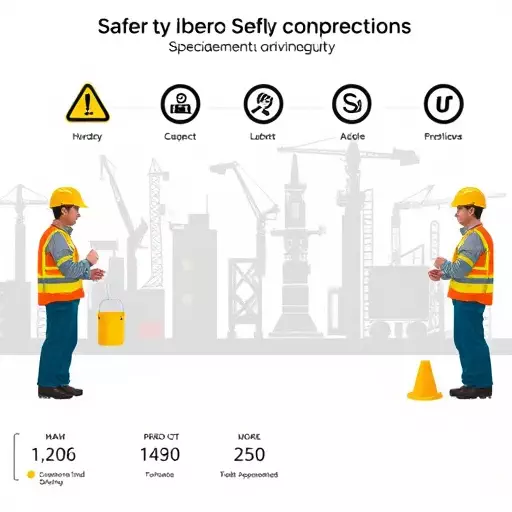Ladder safety requires a multi-faceted approach involving regular maintenance, proper storage, and specialized safety training by industry experts. By identifying common risks like slippery surfaces and overloaded ladders, and implementing tailored hazard assessment techniques, safety training curriculum development can minimize accidents. Hands-on practice, combined with theoretical knowledge, fosters a culture of safety for various ladder types, ensuring suitable selection, inspection, and safe working practices.
In today’s dynamic work environment, ensuring ladder safety is paramount to prevent accidents and save lives. This article delves into the comprehensive aspects of ladder safety and inspection, providing essential insights for professionals across various industries. From understanding common hazards and identifying risks to specialized safety training tailored by sector and effective regular inspection protocols, each section offers practical guidance. Discover how hazard assessment techniques, curriculum development for safety training, and proactive maintenance can create a safer, more robust work environment, minimizing potential dangers associated with ladder usage.
- Understanding Ladder Hazards: A Comprehensive Assessment
- – Identifying common ladder-related risks
- – Types of ladders and associated dangers
Understanding Ladder Hazards: A Comprehensive Assessment

Understanding Ladder Hazards involves a comprehensive assessment of various factors that contribute to potential risks during their use. A thorough inspection should consider the ladder’s condition, including any signs of wear, damage, or instability. Regular maintenance and proper storage are essential elements in mitigating these hazards, ensuring ladders remain in good working order.
Specialized safety training by industry experts is crucial for employees, as it equips them with hazard assessment techniques tailored to different work environments. Safety training curriculum development should focus on identifying high-risk scenarios, such as slippery surfaces or overloaded ladders, and provide practical solutions. By combining theoretical knowledge with hands-on practice, organizations can foster a culture of safety, minimizing the risk of accidents related to ladder use.
– Identifying common ladder-related risks

Identifying common ladder-related risks is a critical step in ensuring safe working conditions. Many accidents involving ladders stem from oversights or a lack of awareness about potential hazards. For instance, using an unsafe or improperly maintained ladder, failing to properly secure it, or not wearing appropriate safety gear can all lead to serious injuries. Regular inspections and adherence to specialized safety training by industry experts are essential in mitigating these risks.
Hazard assessment techniques play a vital role here. These include visually inspecting ladders for any signs of damage, checking the stability and integrity of their structure, and ensuring they are suitable for the task at hand. Safety training curriculum development should incorporate practical exercises and up-to-date information on best practices to empower workers to identify and avoid these risks effectively.
– Types of ladders and associated dangers

Ladders are essential tools in various industries, but they also present unique hazards if not used properly. Different types of ladders serve distinct purposes—from extension ladders for reaching high areas to step ladders for close-quarter tasks—each with its potential dangers. For instance, extension ladders require careful setup and leveling to prevent tip-overs, while step ladders should be used with caution around power tools or hazardous materials to avoid trips and falls.
Specialized safety training by industry experts is crucial in understanding these risks and implementing effective hazard assessment techniques. A well-structured safety training curriculum development program can equip workers with the knowledge to select the right ladder for each task, inspect it before use, and maintain safe working practices. This proactive approach reduces the risk of accidents, ensuring a safer environment for everyone involved.


